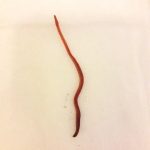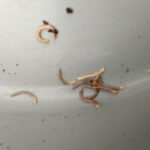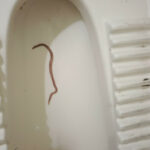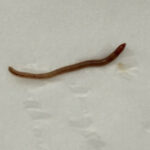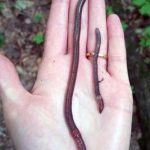Depending on the environmental conditions, certain earthworm species may live anywhere from 4-8 years. The life span of an earthworm also depends on the number of predators the worm has to fend off each day. If the earthworm lives in a thriving environment and free from most predators, it is not uncommon for earthworms to live up to 10 years or more.
Earthworms play an important part in our environment. They help trees, plants, vegetables and fruits thrive through their work. Earthworms aerate the soil. When they burrow through the soil, earthworm tunnels allow air in to help plant roots breathe.
The eating habits of earthworms also help with the environment. As they digest organic matter, their bodies expel it and produce excrement that is rich in calcium, potassium and phosphorus. Called castings, the nutrients enrich the soil to make plants happy. The earthworm castings also help the soil retain water. Moist soil helps the growth period of plant life.
Equipped with a moist environment, earthworms can thrive and reproduce. Earthworms mate and reproduce in warm moist soil and they do their best to stay away from the light. Remaining close to its food supply is also an important part of an earthworm’s reproduction process and existence. Earthworms eat leaves and dead grass, providing the necessary nutrients that help the worm thrive. Those nutrients include a healthy diet of bacteria, algae, and fungi. Earthworms also eat plants, fruits and vegetables.
It is important to protect the habitats of earthworms so they can keep our plants healthy. Without lungs, earthworms breathe through their skin. This means earthworm skin must be moist at all times. When the skin of a earthworm dries out, the creature will die from suffocation. A balance must be maintained between moisture levels because too much moisture can be fatal to earthworms. When soil gets inundated with water, the earthworm will tunnel to the surface. If there is too much sunlight, the worm can become paralyzed.
More Facts About Earthworms
·There are more than 4,400 different types of worms in existence today. Of the 4,400 species, there are 2,700 species of earthworm. There are more than 1,200 species of another type of worm called the inchworm.
·earthworms belong to one of several different types of ecological groups. There are three broad ecological groups that have been identified for earthworms including: epigeic, endogeic, and anecic. The groups are based on what the earthworms eat and where they tend to live in the soil. The epigeic group is a litter feeder, litter dweller, pigmented, small in size, and it doesn’t burrow. The endogeic group consists of rich soil feeders, topsoil dwellers, has no pigmentation, burrows horizontally, and it is small in size. The anecic consists of litter and soil feeders, soil dwellers, dorsally pigmented bodies, extensive vertical burrows, and a large size. Size and color are usually good distinguishers for adult earthworms.
·The clitellum of adult earthworms contains features called genital tumescence, and tubercula pubertatis. The clitellum features, the male pores, and female pores are found above the clitellum and are all parts of the earthworm reproductive system.
·The earthworm has “setae” which are tiny hair-like projections that are arranged in rows along the earthworm body. The setae are used for locomotion by the earthworm.
Earthworms can be found in just about every corner of the earth. They live in trees, in bark, and under rocks as well as along rivers, near springs, and in ponds. Their favorite place to live, however, is burrowed inside the earth’s rich soil. During the winter months they burrow deep within the earth until the surface warms again during the spring. During the warm summer months, earthworms stay closer to the tops of soil where they create tunnels to wiggle in and out of. Again, these tunnels are extremely important for plant life as they create a path for water and air, which is essential for the survival of plant life.
·Although you cannot see them, believe it or not, earthworms do have mouths. The earthworm mouth is called the prostomium. The worm’s mouth is actually big enough and powerful enough to grab a leaf and drag it around. They also have a pharynx, esophagus, crop, gizzard and intestine. When the worm eats its food, it pulls the materials into its mouth with the help of the pharynx and its prostomium (also called acron). This creates a suction motion. This suction motion aids in helping the worm consume large amounts of food in a sort amount of time. The gizzard grinds the food.
·Places like China, Australia, Greenland, and the Sahara Desert have their own indigenous species of earthworms. Besides the Sahara Desert, you won’t find large numbers of earthworms living in “sandy” areas, especially sandy beaches. The vast majority of earthworms on our planet can only survive under certain environmental conditions.
All About Worms is always free, always reader-supported. Your tips via CashApp, Venmo, or Paypal are appreciated! Receipts will come from ISIPP Publishing.



